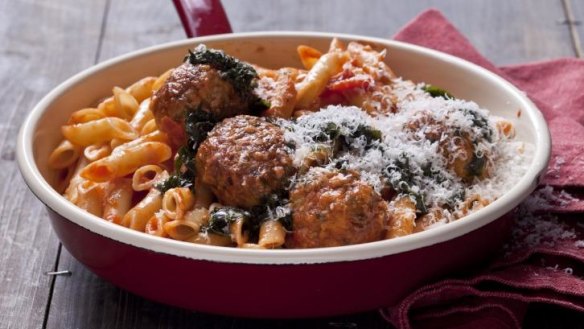Why do recipes call for dried oregano, not fresh?

I love growing fresh oregano and using it in my cooking. Why do all recipes call for dried oregano? Is there a difference? G.Willis
If you have ever been to the Greek countryside at the end of summer and you walked along paths surrounded by the tall flowering heads of wild oregano you will understand why the Greeks called it "mountain joy". Oregano comes from "oros" meaning mountain and "ganos" meaning joy. That heady aroma that fills the air is a phenolic compound called carvacrol also found in thyme and wild bergamot. It's antibacterial, which could explain why you'll find it in a lot of Greek marinades. Greeks dried oregano so they would have a supply all year round. They would wait until the flowers had dried so they would give up their seeds to spread more joy. When cooking Greek dishes you won't find better dried oregano than the big bundles bought from delis. In fresh oregano you'll find other compounds, such as chlorophyll that gives fresh greens their bright note, that don't survive the drying process intact. I personally love fresh oregano, as it has such a rich aroma and really sharp tang. Why do recipes call for dried oregano? Convenience, mostly. More people who use cookbooks have access to dried herbs than fresh. Not everyone can grow fresh oregano. If substituting fresh for dried herbs in a recipe the ratio is three measures of fresh for every one measure of dried.
Why can't one buy preserving wax any more? I went to four supermarkets and there was none to be found. M. De Saint-Ferjeux
How times change. A generation ago there were different brands of preserving wax competing for shelf space. Now there are numerous brands of depilatory wax. Preserving wax, for the younger readers, is made from paraffin and is poured over freshly made jam to create a seal to stop the formation of mould. Try the local family-owned hardware store (Bunnings doesn't stock it) or order good old Fowlers Vacola online at fowlersvacola.com.au. You also can pasteurise freshly made jam poured into screw-seal jars by carefully simmering them in a large saucepan for an hour or so. Place jars on a immersed round cake rack so the jar bottoms don't touch the bottom of the saucepan. Drain, protect hands with a dishcloth, tighten lids, allow to cool, store in a cool dark place.
Letters, Corrections and Apologies
I am so terribly sorry to those of you I offended when I recalled a story about pesto made in Genoa by a nonna who ground basil leaves, pinenuts, oil and cheese together in a mortar and pestle. N. Chandler wrote: "pesto is NOT hand-ground by the Nona (sic) in a mortar and pestle. Food is ground in a mortar with a pestle, or food is ground using a mortar and pestle. To be fair you are not the only person to make this error. Just about every chef that opens his mouth in public uses the same expression."
Send your vexing culinary conundrums to brainfood@richardcornish.com.au or tweet @Foodcornish
The best recipes from Australia's leading chefs straight to your inbox.
Sign up